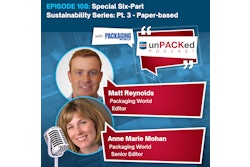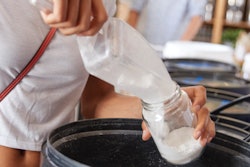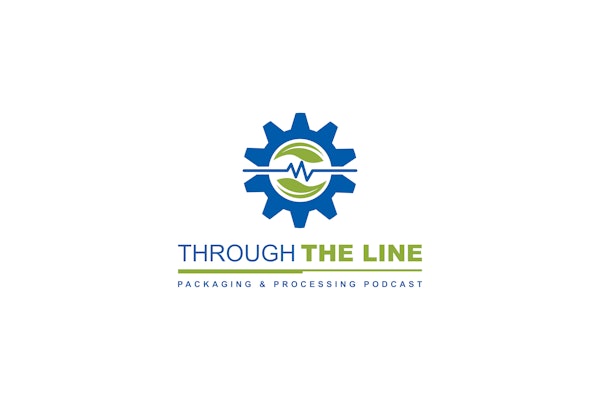Part four of unPACKed’s six-part sustainability sit down with Packaging World editors Anne Marie Mohan and Matt Reynolds takes us to the world of reuse and refill. Reuse and refill is more than just the ubiquitous beverage containers everyone carries around to do their sustainability part. Mohan and Reynolds cover sustainability and packaging materials daily for Packaging World and discuss how reuse and refill is making inroads in various markets, including health and beauty, cleaning supplies, and food and beverage.
To subscribe, rate, review, and find more unPACKED podcast episodes, visit pmmi.org/podcast or find us on Apple Podcasts, Spotify, iHeart Radio or wherever you listen to your podcasts.
Sean Riley:
So with all the fancy introductions out of the way, welcome to the podcast Matt Reynolds and Anne Marie Mohan. Welcome, Matt.
Matt Reynolds:
Thanks for having me, Sean.
Sean Riley:
And welcome, Anne Marie.
Anne Marie Mohan:
It's a pleasure to be here.
Sean Riley:
Oh, the pleasure is always all mine. Today we're talking reusable packaging. And the usual example that everybody uses with reusable packaging goes back to the old idea of the milkman drops off filled jars of milk. You use the milk. When you're done, you put the jars back out. I actually, growing up outside of Philadelphia in that area, we had a company, and this wasn't as far removed I think as the milkman, it was called Charlie's Chips. And you would get these metal tins, and they would sit outside your house when you needed a refill. But basically inside was a clear plastic bag of chips, pretzels, whatever type of thing you would want. And then when you needed refills, you let them know. You put it back outside in the tin, and they would put it in there. So it's kind of the same idea. I don't know why that fizzled out. I guess Frito Lay kind of took off and stuff like that.
And that whole business, which is weird as we see, I'm getting off on my own rant now, as we see that kind of e-commerce and bringing direct to consumers coming back. But let's go reusables because that's why we're here. So I guess basically why is that something that we're seeing sort of come full circle back into the cycle phase.
Anne Marie Mohan:
Well, we often hear reduce, reuse, recycle. And there's actually a reason that they're in that order and that we have that saying. And that's because the EPA has a hierarchy of non-hazardous waste material. And so when you want to be more sustainable, the best option is to reduce packaging. So maybe light weighting or packaging. And then the next best option is reuse. The least favorable option is landfill. But before that, you get to recycle. So there is a reason why we have that saying.
Sean Riley:
Okay.
Matt Reynolds:
And also the two examples you gave, Charlies and milkmen were really simplistic and everybody could easily understand them because it was a matter of leaving something on your front porch. The milk was collected or left every day so there wasn't any worry about spoilage, that kind of thing. But after decades of single use packaging and the package itself going one direction, not cycling round and round, there is a certain amount of reeducation that has to happen. People have to get back used to it. But now there's tools to better educate or bring that consumer back around to the idea of circular or of a durable, usable, refillable package, both on the consumer side, consumer education side, whether it's QR codes or videos on YouTube that can explain to the consumer, this is how you do it, this is how you can correctly do it, and completely adhere to the program so that you get these necessary 50, 100, whatever it might be, cycles out of a durable package.
And that works on the brand side too because they're learning about the consumer's behavior. So we often hear about friction, and the more friction there is for a consumer who's used to just buying something up, grabbing something off the shelf, no friction, or very limited friction. But the more steps or the more boxes they have to check in order to accomplish something, the more difficult it's going to be for them to do and the less likely it's going to be for them to do. But as brands use QR codes or just learn about consumers behavior and how they're doing it, where their hangups are, where the missteps are, and then can improve them and iterate over time, iteration 2.0, 3.0 and improve these systems, they can lower the friction, reduce the friction, and make it easier for consumers to do this.
And eventually the ideal would be something where no friction at all, no barrier to entry. So that's why with these tools that we have available now on our phones and with the tools that brands have to be able to monitor consumer behavior, their end behaviors, that basically lowers the barrier to entry for these renewable systems, reusable systems.
Sean Riley:
So I love that whole idea across the board. So I guess, what are we seeing out there so far where kind of reusables are popping up? That are getting breaking through the friction so to speak.
Anne Marie Mohan:
Well, I will tell you one of the largest rollouts that I've seen is a program that was developed by TerraCycle. They're an up cycler in New Jersey and they came out with a program called Loop and it's a reusable shopping platform. And right now it's a refill at home model and going into the return at the store. But they started out with the idea that reusable packaging has to be as convenient as Matt said, as single use or else people won't change their behavior. But they rolled out with a number of very large brands, Unilever, Proctor and Gamble, where the packaging is reusable up to 100 times. They initially set up a system where the consumer would order products online. They would come in a tote through UPS. They'd use a product, then when they were done they would let UPS know or indicate through the website that they were done. And then UPS would come and pick it up.
And a really interesting aspect of this returnable packaging is that because the brands weren't so concerned about the cost per unit for the package, they could really build in a lot of functionality, a lot of aesthetics that they can't usually do with single use packaging. So it really is a new paradigm altogether.
Sean Riley:
Very interesting. Now when we're saying the products, are they using, for lack of a better word, sort of generic, whether it's cleaning supplies or hair supplies or are there brands that we're familiar with that are being put in this?
Anne Marie Mohan:
They are brands that we're familiar with.
Sean Riley:
Interesting. Okay. Very cool.
Matt Reynolds:
Yeah. I mean just to echo what Ann Marie said that the margin, the pressure on keeping the margin low for single use and basically just trying to make the packaging portion as inexpensive as possible, that was the pressure for decades. So that eroded the ability for brands to be really creative with packaging. And we'll talk about a few of the ones that Henry has lined up later. But the shackles are off now because if essentially you're going to get 100 cycles out of a package, then you don't need to worry about the pressure, the downward pressure on the price because every single time you reuse it, it's like you half the price of that. And moiety that again over a 50 or 100 and suddenly a really nice package, really well printed that has all this functionality that single use never could have had is actually less per use than that single use.
Sean Riley:
When I was thinking that, and that's why I asked about the brand, the specific higher end or the name brands that people are familiar with, it would seem like something from the CPGs, and this would be something they'd want, like you said, because it's taking the whole package part out of play for 100 cycles. They just have to worry about creating the product, which is what they started to do in the first place. Interesting. So do we have any other of these kind of refill or reusable type deals?
Anne Marie Mohan:
There is another refill in store system or refill in the store system from the Body Shop now where last year they launched in 400 of their stores. This year they're launching in 400 more. Where the consumer buys a bottle, they fill it up at the counter with its hair care and body care products. When they're done using it, they bring it back cleaned. And then they refill it again at the store. So that's another.
Matt Reynolds:
Yeah, and there's trade offs to all of these models. And we'll go through a few different models. That was one where the consumer is actually, you mentioned the milkman. The milkman comes to your home. So this is different where the consumer has an additional, I guess, responsibility. And there's two kind of elements to that. First, they have to physically wash out and carry it. Then there's the messiness aspect. Sometimes consumers might not want to actually interact with the product until they're using it in their bathrooms. They don't want to be filling and cleaning and so on. But at the same time there's great convenience, and you can imagine how inexpensive that might be.
Sean Riley:
I was going to say, is it cheaper for the customer? I mean it has to be if you're refilling it.
Matt Reynolds:
And I would imagine over time. I don't know what the algorithm is for the brands. It's probably cheaper for the brands to have the consumer go do it themselves. But they might be able to, maybe the brand does that for them, and delivers it either through e-com or something like that. Or the consumer can return, say a dirty used package where it's then cleaned and whatever needs to be done industrially cleaned at the brand level. It's more expensive for the brand. So all of these have trade offs, but each model has it's niche what's within the system.
Sean Riley:
But it's, as you were saying, friction. I'm thinking of the friction you said earlier. If you're eliminating that friction by making it less expensive, okay, that's one thing that's going to eliminate that friction. Buying it that way is going to make it less expensive than buying it from new. If you can just return the bottle and get a similar one, they're going to clean that, refill it, and give it to somebody else. That type of deal, that would be, would seem to be friction reducing ideas. So how about options where you hold onto it, and they bring the refill to you? Is that something that we're seeing along the... I guess if they were to bring the milk to you and you were going to fill it yourself back in the container, do we have stuff like that? Not for milk but in other ideas?
Matt Reynolds:
I guess so. I guess that would be the refillable, where you get the durable pack that you keep and you're never really returning the pack. This is where we see aluminum or I mean, it can be anything but you can see glass in this case for a lot of cleaning products. And then the refill portion itself is something that's super lightweight that can be sent via e-commerce in the mail, direct to consumer, that kind of thing. So that could be a pouch. I saw one at Pack Expo, Philadelphia recently Expo East that was Pantene. It was in Japan, but it was a durable, aluminum shampoo bottle that people kept. And then it was a PE on PE. So monolayer pouch material that would, how is the concentrated refill? So not only are you sending a refill, which means you're sending less packaging altogether, but you're sending concentrate which means you're not shipping as much water. And these are concentrated down or there could be a powder that then the consumer then mixes with water at his home, and that's that much less weight that needs to be sent around.
So that's another model. Truman's does this. Grove Collaborative, I mentioned the Pantene. There's a lot of areas that are doing this right now.
Sean Riley:
I feel like there was something more that you told me about Loop, and I don't remember exactly what it was that we didn't touch on because I know they're a big story, and it's always covered in packaging world so it's something that I want to make sure gets covered thoroughly.
Anne Marie Mohan:
Well, what's interesting about Loop is they began as an e-commerce platform, but their ultimate goal was to have these products at retail. So there are now Kroger stores that have a Loop section within the store. So it's all these name brands with the reusable packaging. You pay a deposit for the package. When you're done with it, you bring it back, and they have kiosks now where you can drop it off, get your deposit back. And another big name that's also using Loop Packaging now is Burger King. So it's expanded to food service, and it's the same idea. You use a package, then you get your deposit back. And as Tom said, he wanted to make it as convenient for the consumer as single use. So his ultimate vision is to have these return kiosks almost as common as trash cans. So you wouldn't necessarily have to bring your Burger King package back to Burger King, you could drop it off at any of these kiosks.
Sean Riley:
I like it.
Anne Marie Mohan:
And then from there they go to these Loop centers where they're industrially cleaned, returned to the brand owners, and refilled.
Sean Riley:
To the thing in my head and if I let it go, it's going to fly away. That I was thinking is we've been talking again, personal care, cleaning, stuff like that. Do we have any of these options for food? You mentioned Burger King. Are there any other ones out there? Because obviously food and beverage is what sort of is the biggest player in packaging.
Anne Marie Mohan:
I feel like Loop right now is the only one I can think of off the top of my head that's doing food. They do cookies, they do Tropicana Orange Juice, they do a lot of dry products in addition to household cleaning and personal care.
Matt Reynolds:
I think on the food service side though Starbucks and some other companies, again this isn't exactly food off the shelf retail, but this is another way that Starbucks, you've seen probably that there's a polypropylene coffee mugs that you just keep using over and over again. So I think this whole model has legs on the food service side as well.
Sean Riley:
Yeah, that's a good one. That's a simple one that like Wawa where you get your coffee, I bring the same cup in. It's cheaper to get it refilled. That's going to eliminate waste right there. I wasn't even thinking of that as something simple that is out there that we do, and that it seems like consumers have no problem doing. You're saving some money. You have the cup anyway, so that seems like another easy entry, takes away the friction, like I said.
Matt Reynolds:
Yeah, I think it's getting easier because brands and food service companies, they're learning about the behaviors. And going back to QR codes, they're getting better at this. They're making it easier. The condition of attendance is becoming simpler. So I mean over time it's working both ways. The brands are coming to the consumers, and the consumers are slowly coming to the brands. And again the consumers, I would say, it's the tip of the spear right now. It's the leading bleeding people who are doing things like Grove Collaborative. But I think especially it's a generational thing too. I think you'll find millennial and Gen Z that they're more adept at technology, and technology is the intersection at which the brand interacts with the consumer and learns about. They learn about each other. How the consumer can use the system and the brand learns how the consumer is using the system so as to improve the system.
Sean Riley:
I feel like especially coming out of the hopeful tail end of this pandemic where e-commerce exploded, that seems to me, at least in my head, is something that would really help this idea of reuse because people are so comfortable having things brought to their house. It's easy to return things, relatively easy to return things e-commerce wise, whether it's Amazon, things like that. Would you guys think opinion wise that would be something that's going to help the adoption of this reusable type thing? Because people are so comfortable having things brought to their house, taken from their house?
Matt Reynolds:
I mean it can't hurt I don't think. I think one piece of fallout among many of the pandemic is just the recognition of the amount of packaging that happens when it's single use, when it's going in one direction. So just the overall understanding of or willingness to embrace more of a circular model I think is there that it probably wasn't there in 2019.
Sean Riley:
Right. And I think we've seen some where you can get, I don't want to name the company because I'm not sure which one it is, but they bring it, they put it in sort of like a tote that you have versus bringing all the boxes and stuff like that. You have your XYZ company tote that they drop off, put it all in the tote, the tote is clean, so that you don't have to have all this additional packaging.
Matt Reynolds:
Yeah, there's a couple, Returnity is one. Boox is another one, B-O-O-X. They just launched. They were in the US. They just launched in the UK. So those are two similar models that the package itself, it's not primary packaging, it's the tote. It's the secondary packaging that would've been the craft corrugated previously is now something that's reusable as well. So yeah, it's moving out from the primary into the secondary packaging.
Sean Riley:
So it seems to me like this was something that is met with some skepticism from the consumer end, but then as you really look at it, we did it as a society 60, 70, 80 years ago with milk. We've done it through the years, and it's another one, we're just kind of circling back to this model of having stuff, go back and be reused. And that's fantastic and great to hear. So I'm sure that we'll revisit this again. I'd like to thank again Anne Marie and Matt for coming on the podcast. And I would like to thank all the listeners at home for giving us a listen.



















